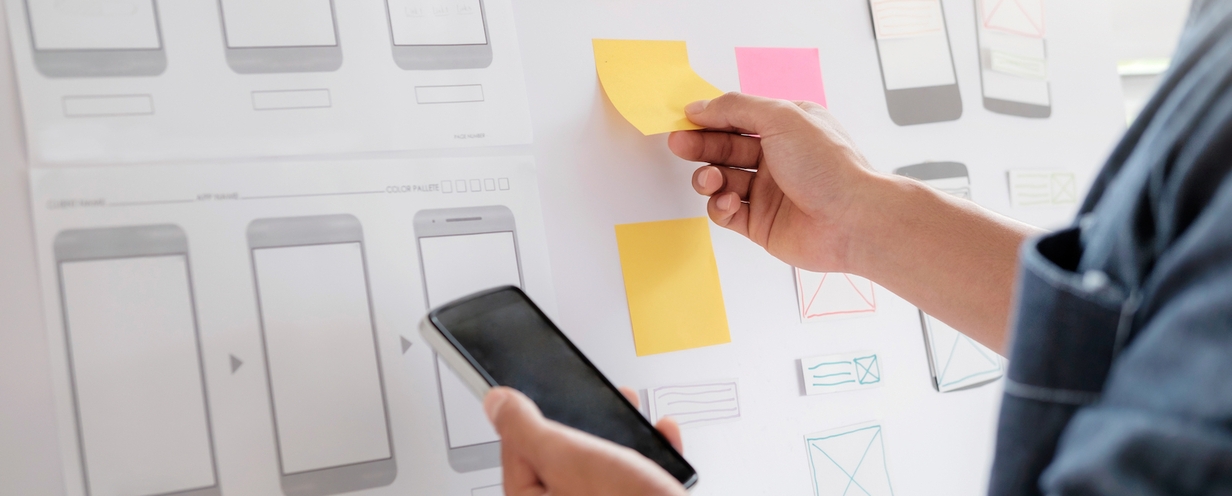
31 prototype testing questions every designer should ask

You already know that fast human insight is key to building a great customer experience. Whether you’re creating a website, mobile app, landing page, or other product, testing can happen at any stage of the design cycle. Despite this, many companies still begin the process of gathering customer insight much later than they should. No matter what you’re creating, prototype testing can—and should—happen early and often in your development cycle.
When it comes to prototyping you can test anything. Have an idea on a cocktail napkin? Test it. Not sure about product-market fit? Try it out on your target audience first. If ever there should be a cardinal rule to creating great experiences, it would be to test first, design and build after (then test again).
If you think it sounds odd to test something before it’s fully baked, you’re not alone. Many companies wait until their offering is fully developed before they test it, and suffer the consequences of rework, or worse, building something their customers don’t want.
Prototype testing enables you to assure that your design is going in the right direction and that you address any essential features or flaws before you write even one line of code. Redesigning a prototype is a lot easier—and less expensive—than reworking a finished product. You’ll save your budget and your sanity by testing right from the start.
No matter what stage you’re in, there are ways to create a prototype you can test. You can start with just a sketch on a post-it, or use one of the many prototyping tools available to bring your idea to life. Once you have your prototype ready, make sure you’re asking yourself these questions as you begin—and continue to—test.
ON-DEMAND WEBINAR
Launch with confidence: a 6-step framework for high-performing campaigns
What is a prototype?
The best way to think about prototypes is that they’re a representation of a finished product. Prototypes are a way for designers and developers to test the flow, interaction, content, and general feasibility and usability of a product before building and designing a fully-functioning product.
Or, for a more formal definition, here’s the Nielsen Norman Group’s perspective,
A user interface prototype is a hypothesis—a candidate design solution that you consider for a specific design problem. The most straightforward way to test this hypothesis is to watch users work with it.
What a prototype isn’t
Despite how much functionality or design a prototype may have, it’s not meant to be the final product. Some features won’t work, and the design and copy likely won’t be finalized. Prototypes are not intended to be pixel-perfect.
User testing questions for prototyping
Concept validation

At this stage, you might have just an idea or the proverbial sketch on a cocktail napkin. When you’re in the very early days of your idea’s life, it’s totally OK to map out the idea with “low-tech” tools, like pen and paper. Not having a fancy interface doesn’t mean you can’t ask detailed questions, however. Here’s what you need to know during the early stages as you validate your concept:
- What problem does your idea solve?
- How are users solving this problem currently?
- Can your target market think of another product that does something similar?
- How have previous solutions failed?
- Do users understand what this product or service does?
- How do users feel about the product or service?
- Who is your competition?
- What is the app/site for and what can users do there?
- Does your target market have a need for this product?
- What devices do users imagine themselves using when they interact with this product?
- What scenarios can they picture themselves using it in?
If you need more inspiration to get started, check out our concept validation template below. Try our concept validation template
Wireframes and lo-fi prototypes

When you’re ready to move beyond the cocktail napkin, it’s time to start wireframing—this is when your ideas start taking their first steps. While these are not interactive or functional, they still illustrate the intention and flow, which is an essential process in the design phase.
Be sure you’re asking these questions to keep your project moving in the right direction:
- Before users even look at the wireframe or prototype, what would they expect to be able to do with it?
- How would they expect it to look?
- Once you show them the prototype, do users understand what it does?
- How does it measure up to their expectations?
- What features are missing?
- Does anything seem out of place or unnecessary?
- How do users feel when using the prototype?
- If users had a magic wand, what would they change about the product?
- How likely or unlikely would they be to use this product once it’s finished?
If you need more inspiration to get started, check out our prototype evaluation template below.
Try our prototype evaluation template
High fidelity (hi-fi) prototypes
 Once you’ve worked through the kinks with the concept and design and iterated until you’re close, the hi-fi prototype is born. This will be a semi-functional facsimile of the intended result. It should be interactive and do pretty much everything it’s supposed to; it just won’t have the shiny new-product feel to it.
Once you’ve worked through the kinks with the concept and design and iterated until you’re close, the hi-fi prototype is born. This will be a semi-functional facsimile of the intended result. It should be interactive and do pretty much everything it’s supposed to; it just won’t have the shiny new-product feel to it.
Focus on these questions to make sure you’re addressing any lingering concept, flow, or basic usability issues:
- Does the prototype do what it’s supposed to?
- Do users think the product’s design matches its purpose?
- What’s the first thing users would want to do on this product? Can they do that?
- When they explore the product, do they become confused at any point?
- Does anything distract them or get in their way?
- Are there any features they completely ignore?
- Does the information architecture and navigation make sense? (Can users find what they’re looking for?)
- Does your target market feel like this product was designed for them?
- What, if anything, would make your users want to use this product frequently?
- How likely or unlikely would they be to recommend the finished product to a friend?
- How would they describe this product using their own words?
At this point, your cocktail napkin has grown up into a respectable, functional member of the community. While your testing days aren’t over, you’ve taken the important first steps that will save you time, money, and sanity by evaluating your idea from the start.
If you need help getting started testing high fidelity prototypes, check out our prototype evaluation template.
A note on user testing prototypes
User testing a prototype is a bit different than testing a finished product. Make sure you inform test participants before the test—or even better, in the screening process—that they’ll be testing a prototype that’s not fully functional.
It’s also a good idea to run moderated tests if you can. While you can conduct unmoderated tests with prototypes, chances are your participants will have questions, and some tasks will require more explanation and guidance, so having a moderator present will help you get the best feedback.
Additionally, remember that testing shouldn’t stop once your product ships. Your test plan should not only confirm that your insights from prototyping worked out the way you expected, but also watch for additional opportunities to optimize and improve the user experience that you couldn’t test during prototyping.
How can your design team leverage UserTesting?
Leverage UserTesting to streamline your design workflow and create top-performing products.





